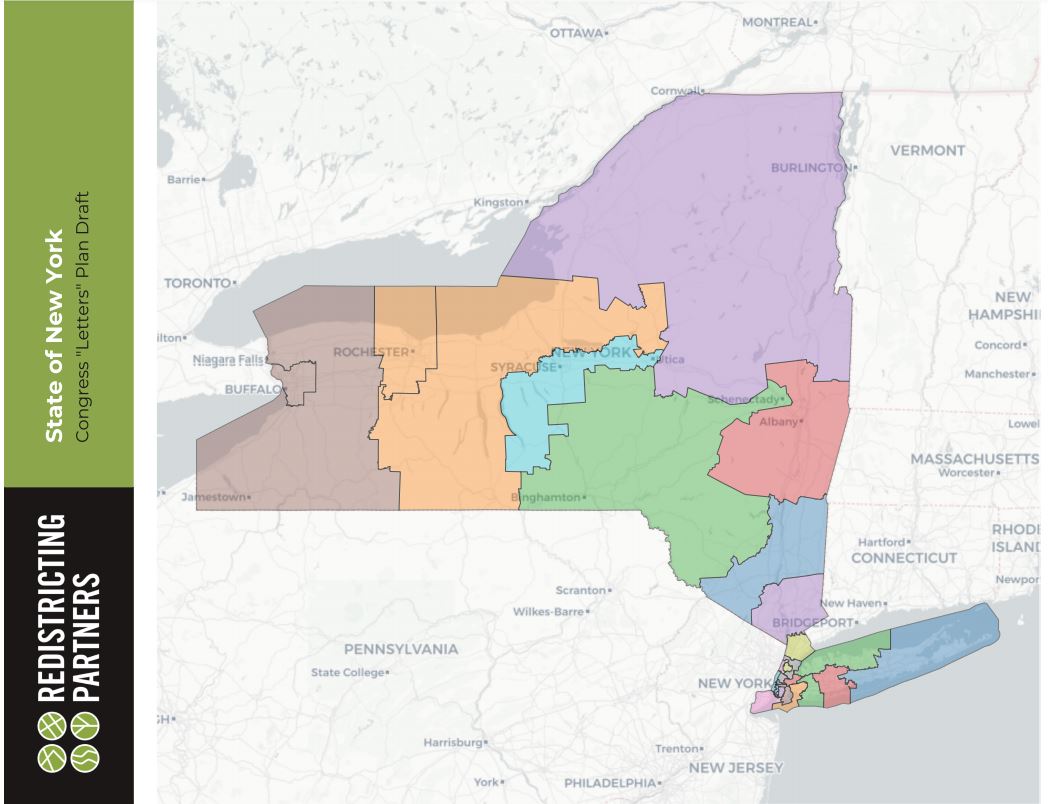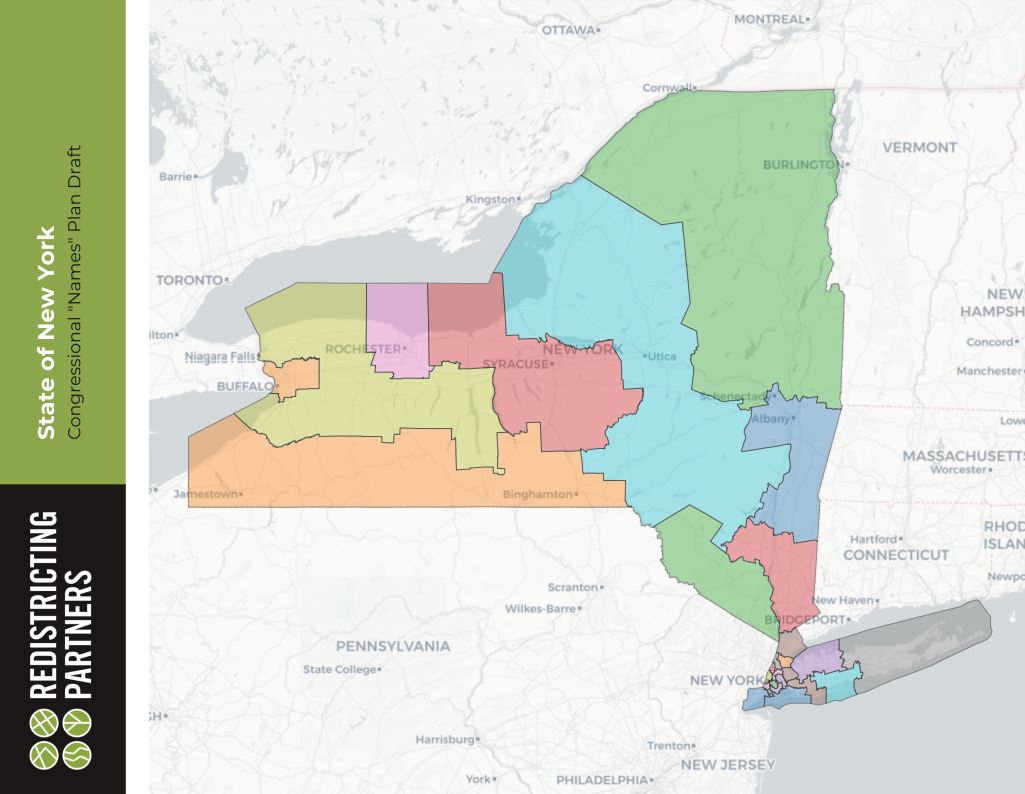State commission maps offer options in redistricting plan

At left is the map proposed by the Democrats with the one at right, keeping much of the Southern Tier district intact, by the Republicans.
- At left is the map proposed by the Democrats with the one at right, keeping much of the Southern Tier district intact, by the Republicans.
- At left is the map proposed by the Democrats with the one at right, keeping much of the Southern Tier district intact, by the Republicans.
The state Independent Redistricting Commission has released two draft maps of Congressional district lines after Republicans and Democrats couldn’t agree on a compromise plan during several recent meetngs. More meetings are scheduled, as are a series of public hearings throughout the state. If there is no agreement among commission members by Jan. 15, the state Legislature is given authority to redraw the legislative boundaries.
Of interest locally is how the Republican- and Democrat-produced maps treat the 23rd Congressioanl District. The Republican map keeps Chautauqua and Cattraraugus counties in a rural district from Chautauqua County far into Central New York while the Democrat plan places Chautauqua and Cattaraugus counties into a district with the Buffalo area.
New York will lose one Congressional seat, with Democrats looking to New York to keep their slim control on the U.S. House of Representatives. Either way, Chautauqua and Cattaraugus counties would have a new Congressional representative with Rep. Tom Reed set to retire after his term ends in 2022.There isn’t much change locally to state Assembly lines nor for the state Senate.
Democrats also propose largely keeping the 27th state Senate district the same while Republicans redrew the boundary lines to wrap around lower Erie County rather than extending as far east.

At left is the map proposed by the Democrats with the one at right, keeping much of the Southern Tier district intact, by the Republicans.
The parties also have largely different plans for state Assembly lines, though the Chautauqua County-centric 150th Assembly District doesn’t appear to change much.
This is the first test of the Independent Redistricting Commission as created through a 2014 statewide referendum vote after contentious redistricting following the 2010 Census. The commission was pitched as a way to draw legislative boundaries that weren’t gerrymandered to the advantage of one party or the other. State Sen. George Borrello, R-Sunset Bay, said the early returns aren’t what was promised seven years ago.
“The IRC’s admission today that they were unable to reach agreement on a proposed map, and the release of two very different maps, one drawn by Democrats and the other by Republicans, is concerning,” said state Sen. George Borrello, R-Sunset Bay. “It suggests that the majority party’s true motivation is to drive this process back to the Legislature, where they can return to the behind-closed-doors gerrymandering process. The ruling party has little incentive to compromise through the framework of the IRC.”
Voting rules are based on political party control of the legislature. When the state Senate and Assembly are controlled by the same party — as they will be in 2021 and 2022 — commission approval of a map requires seven votes, including one commissioner appointed by each legislative leader. If no map reaches this threshold, the commission will forward the map with the most commission support to the state Legislature.The legislature has two opportunities to accept or reject commission recommendations without modification — with voting rules based on party control as well. When the state Senate and Assembly are controlled by the same party, votes to approve a map must get two-thirds support in each chamber – which the Democrats currently have in both the Assembly and Senate. After rejecting two commission maps, the legislature may substitute its own amended map. By statute, amendments may not modify a commission map by more than 2% of any district’s population.
Some of that approval process could change is a statewide constitutional amendment that will be voted on during the Nov. 2 election that would make it easier for Democrats to draw their own lines when there is a redistricting commission stalemate. If the constitutional amendment passes, 60% of each chamber would need to vote in favor of legislative plans rather than two-thirds of each chamber. Also, the size of the state Senate would be fixed at 63 members in the state Constitution, preventing either party from simply increasing the size of the chamber to protect a majority.
State residents who are in prison during a census will be counted at their place of residence, a change Democrats have wanted to make because Republicans, for years, counted downstate residents serving prison sentences upstate as upstate residents.








